Systemic Machine O Organisation, Organism and Organs[without]
Nádia DuvallPrologue
Every part of me is a machine that works at random according to a system organised in the order of 'pataphysics. Rooms smell of the past. Whatever happened there has already happened. To enter the studio is to take a step back without leaving the present. Each room is an archaeological voice that comes to life by doing. This doing - which longs to Be - is an oxymoron: present and past simultaneously.
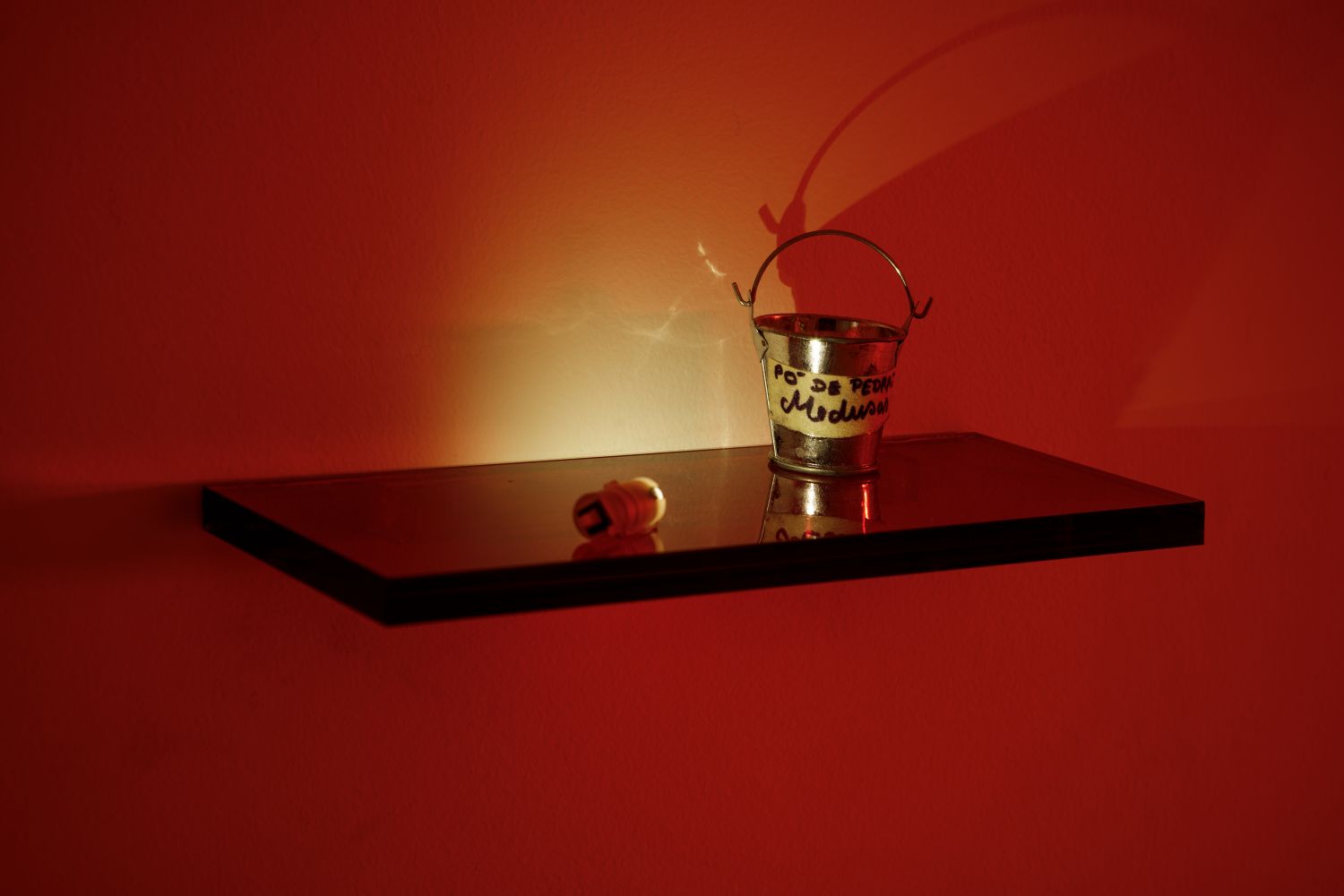
The painting gains corpus and reveals – in an electric glow – memories that move back and forth like a VHS cassette stained by time and space. The painting unfolds on multiple planes and becomes an object.
Today there is rain and the studio has that smell of wet footprints that entered and didn't come out. The well awaits me. It exhales the sweet smell of the paints.
He asks me to dance around him and fall over from exhaustion:
I dance, I dance, I DANCE!
In falling, it frees me from flesh, from the dormant body, from hair and finally from the rain. In non-space I am a non-body, an undead reproductive organism. I am systemic voice, organ and organless.
Shhhhh....
Here, silence is required!
The rain stopped.
3 O[s] - equation for a machine
The word ‘organise’ is derived from the term ‘organ’, and is related to the term ‘organism’. To organise is thus to make of anything an entity resembling an organism, and how it functions. (...) The organizer of an ensemble must begin by tracing the organization exclusively in general lines (...) Once this is done, the organism is set in motion; and from contact with practice, with the accidents and contingencies of the reality of life, the ‘definition’ of the ensemble is given, the simple initial outline is filled out, the organs and sub-organs of the whole are established and concatenated. – Fernando Pessoa's archive
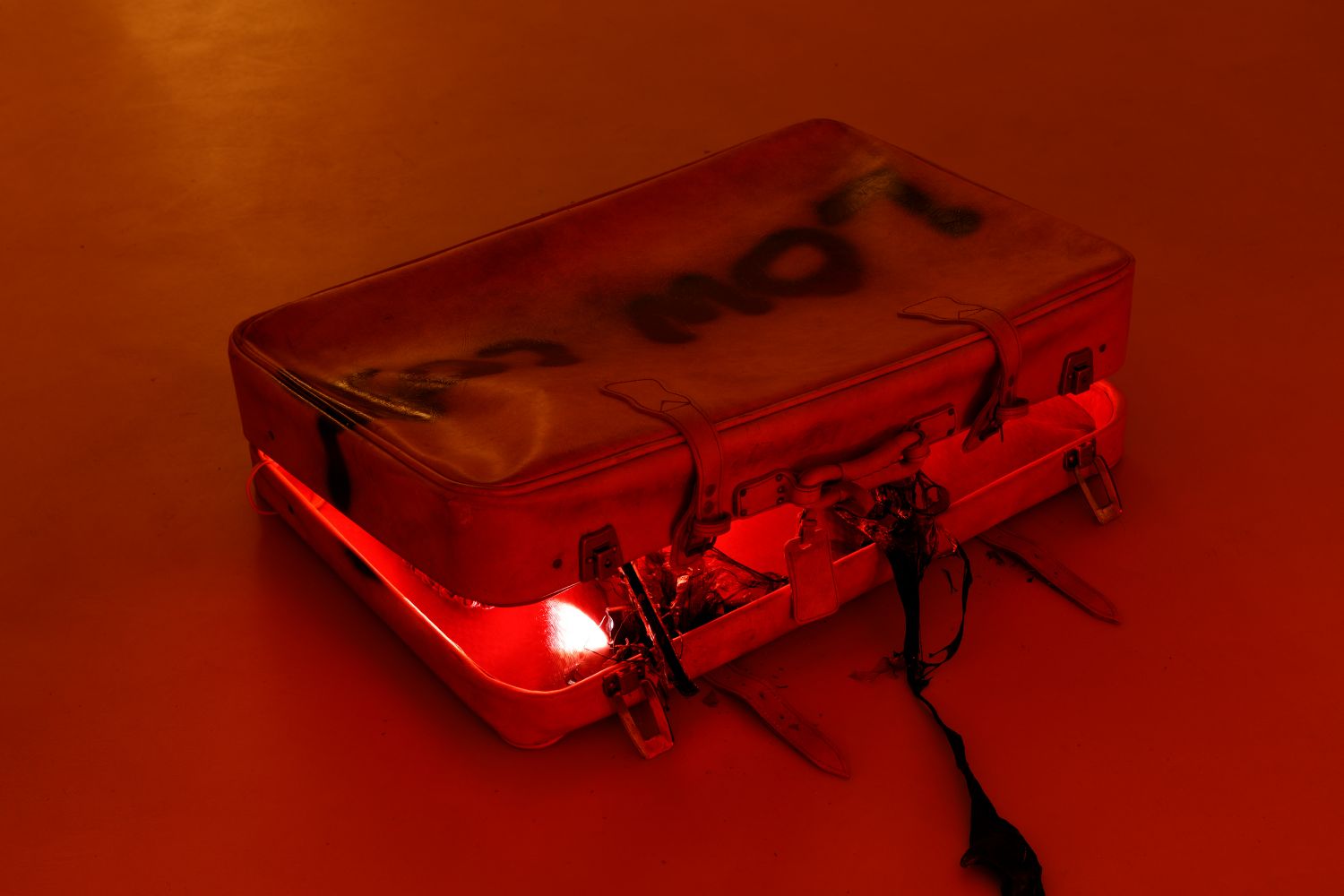
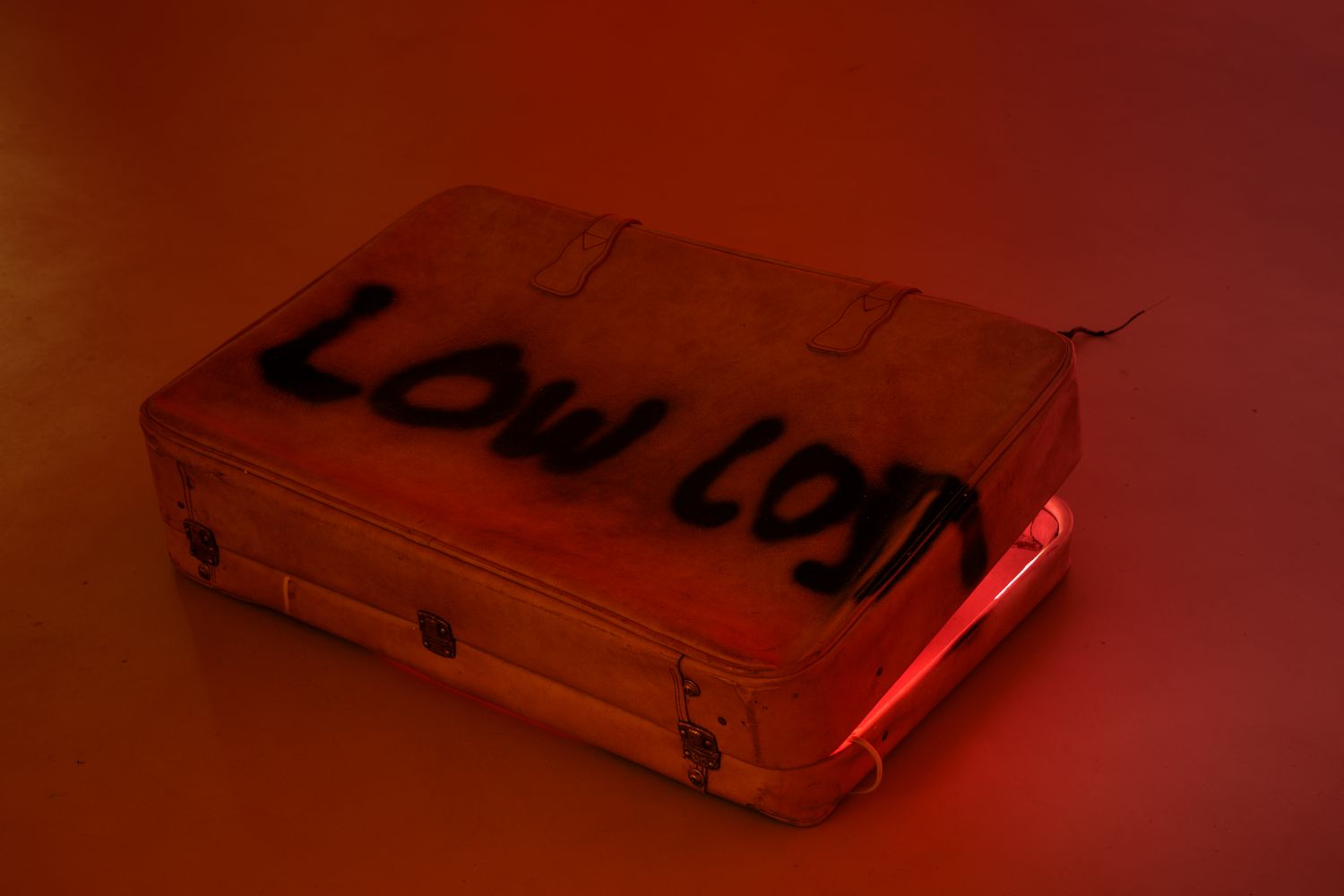
This brief essay is an exercise in thinking about the whole structure of my studio, which is the backbone that supports the whole praxis of my work, both plastic and literary. I call it Cave. Sometimes I call it Cávrica, when my dyslexia wins. A mixture between Cave and Factory in Portuguese. Maybe dyslexia is always right. The organicity of the atelier requires texts. It requires fertile ground to sprout new concepts. It requires water and the absurd allied to a strange rationality. A sonorous composition, where the silence resonates deep: a perfect note that merges body and space.
I propose in this essay an opening: it is urgent.
The world languishes in conservatism and art dies more and more. It is necessary to reconnect. To find religiosity within the studio. Fall in love. Rethink everything through archival, aesthetic and linguistic recollection. Fall into obsession. We can't forget poetry. It prevents drowning. It lifts us up when we can bear it no longer. We hover. Art has these terrors: it sinks us. It removes our skin, our body and donates our organs to the demons.
The structure of the workshop is a system. A machine. And more than a working methodology, it is a conceptual part of the work. The studio is here recognised as a work of art – perhaps the ultimate work of art, an integral part of life. For Artaud there should be no separation between art, life and culture[1]. For him they are the same thing. And this essay-atelier can corroborate this theory.
With this brief introductory note I also intend to contextualise this essay within my doctoral research on heteronymy[2] in my work and the studio as stage and work of art. To both I give the name Epileptic Machines.
But what machines are these?
For Gilles Deleuze and Félix Guattari everything is machine[3], process and production. All machines are connected to a machine-origin that is connected to a machine-organ, arising in artistic practice, the process of the process, that is, a constant process that is inside another process, and so on. The studio, as practice or as object, is this desiring process that allows the creation and the artist's plastic, conceptual and philosophical spontaneity. The immutable and stagnant work of art is called the celibate machine, despite some controversy among some art historians.
But what happens when the author himself is the work?
The performer?
What happens when the studio is a stage, changeable and that turns with the trepidation of the context and the moods?
The heteronymy and the atelier (perhaps the real Theatre of Cruelty) thus function in a kind of convulsions. One moment they stagnate, the next they produce. Sometimes they are the work of art, sometimes they produce works of art. And even these can continue to produce from themselves. This is why this System could never be governed by the most traditional rules and concepts. Thus, the concept of the Epileptic Machine was created to describe this production in convulsions. This epileptic nervous system. My identity exponentiates the Multiple. The trauma has caused fragmentations in the self. This skin has been fragmented by a whole other System that is called context. Or history. Or civilization. Or capitalism. Thus aligning with Derrida's idea that ‘there is no outside of text’ so everything is context.
Epileptic Machines, starting from the principles enunciated by Deleuze, are apparently desirous, yet their convulsions betray this foundation completely. That is, they operate insofar as they produce art and are simultaneously the work of art itself: an open work[4]. At the same time a living work, which grows, evolves, desires, reproduces, learns and dies. Thus, the concepts developed in this brief essay largely inhabit the abstract plane and, as Fernando Pessoa states: ‘(...) abstract, however, are the essential things, and the very understanding of anything is an abstraction’[5].
My atelier-machine, with its non-sense and abstract appearance, is a living organism within complex processes and systems perfectly organized under the 3 O[s] equation.
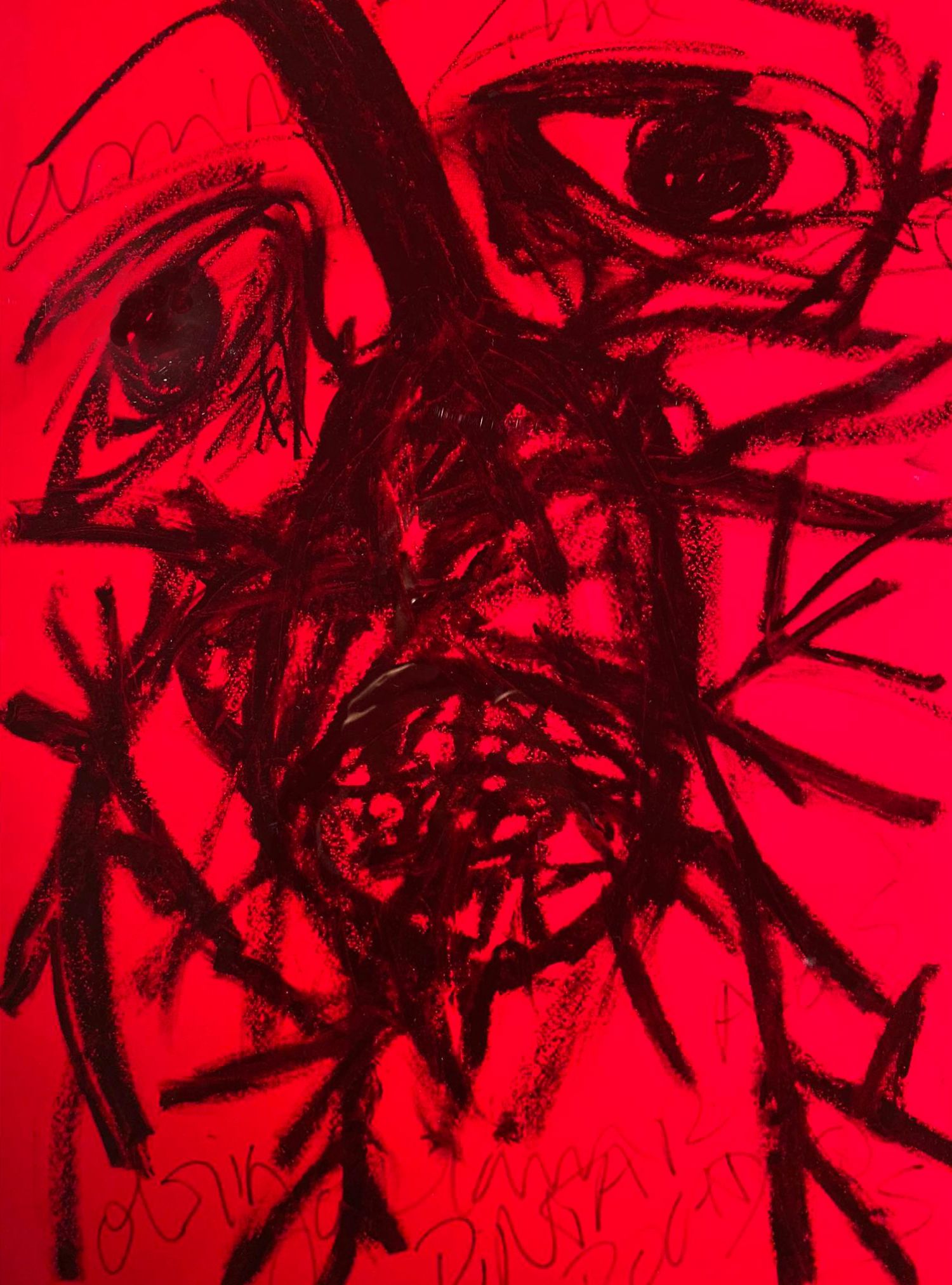
When enunciating my atelier as a work of art a glossary of it must be taken into consideration, because here, it is understood, the artistic making and the final work grow in such a way that the creation of new words and languages to describe the system of the 3 O[s] become urgent. The glossary, from the idea of the work of art, becomes here an integral part of it, so it also operates as a machine but of text and contextualization in time and space.
So what is the 3 O[s] Equation?
To begin with - we imply from what was said before - that it is a System. A kind of methodological map of the studio where the Organisation, the Organism and the [with or without] Organs are theoretically and plastically rehearsed. These are the basic elements of the machine of creation (the atelier-cave), systemic/symptomatic in itself, in the sense that it is a direct reflection of the self and of the social, political and cultural context, from which it is impossible to distance oneself.
In the studio, between light and shade, memory-objects, text-objects, drawing-objects, painting-objects appear, each one announcing the arrival or the departure of the other, in the last instance death may even appear.
The workshop lacks its own system of organisation and organism.
The organisation starts from a glossary system and a spatial system, where each element of the atelier, as in a cogwheel mechanism, has its own place/space in the studio.
In spatial terms, the organization starts from the centre, where there is a circle that is the Uterus. This Uterus is a circular pool 480 cm (16 feet) in diameter where objects and paints with (al)chemical formulas are dipped, giving rise to translucent and very thin ink membranes which I call Skins. The secrecy in the so-called alchemical formulas is also due to the emphasis on myth, and this myth is also part of the fold[6] of the work. The skins of paint, are only the continuity of the Skin that I inhabit and transports me.
Everything that is dipped into that ‘amniotic’ liquid (let's call it that because of the deep connection of the process to the symbol of maternity) are mnemonic objects that come from an ancestral knowledge, conscious or unconscious. In other words, they are pieces made for the purpose or objects found on the street, in abandoned houses or in the junkyard. These works materialize sensations, feelings, desires, impulses, stories and histories. No object falls short of its own identity. It already carries within it a life. The rubbish is the Temple of Memory.
Outside the Womb – the big O – the objects are reworked, losing any character of the ready-made proposed by Marcel Duchamp. Its existence requires an encounter, an essence of instinct, which wanders between inertia and making things happen, between death and life, until its sublimation, when it is immersed in water it almost always becomes a celibate machine, as it becomes inert, exhibited somewhere else. Evidently, its celibate state may suffer alterations if a mechanism is associated to its installation that forces it to be desirous or epileptic.
In the process, and I stress, in the organisation, there is a persistence of the O form as a resonance of the feminine archetype.
In the space around the Uterus appears, circularly, desirous and bubbling (perhaps even more so!), the Multro.
Multro is an amalgam that arises, like Cávrica, from the junction of two words (multiple + uterus) and is a concept created to describe the places of creation around the Uterus, as if they were multiple gestational spaces. It is therefore assumed that the space outside the studio where in situ installations are carried out, such as in museums and galleries, is also Multro. It is an authentic mise en abyme[7] where performance is inside painting, which in turn is inside sculpture, which in turn is inside written texts, which in turn is inside sound and so on, varying this order among themselves.
In this space multricitie occur, that is, multiple creation movements, happenings and/or interactions of the heteronyms with multiple plastic variants from painting, sculpture, video, sound and writing.
Multricity is a conceptual neologism that encompasses the unfolding of personalities (heteronymy), production (desiring) and the use of multiple media of artistic expression (hybridity), i.e. it can be synthesised in the following equation:
Multricities = heteronymy + Multro + hybridism
The Systemic Machine, being a symptom of identity, that is, of the Skin, thus expands from the Womb to the Multro, from one organ to a system of multiple organs, to a transtextual multricity. In the Multro arise the Rooms of some of my heteronymic identities, sisters of each other, bodies without organs, according to Antonin Artaud's definition. Each room is a reflection of the conscious, the unconscious and all the context that underlies the biography of each heteronymic personality. They are also the pelagus of the reproductive machine-atelier that in an epileptic come and go, sometimes creates and sometimes kills the object.
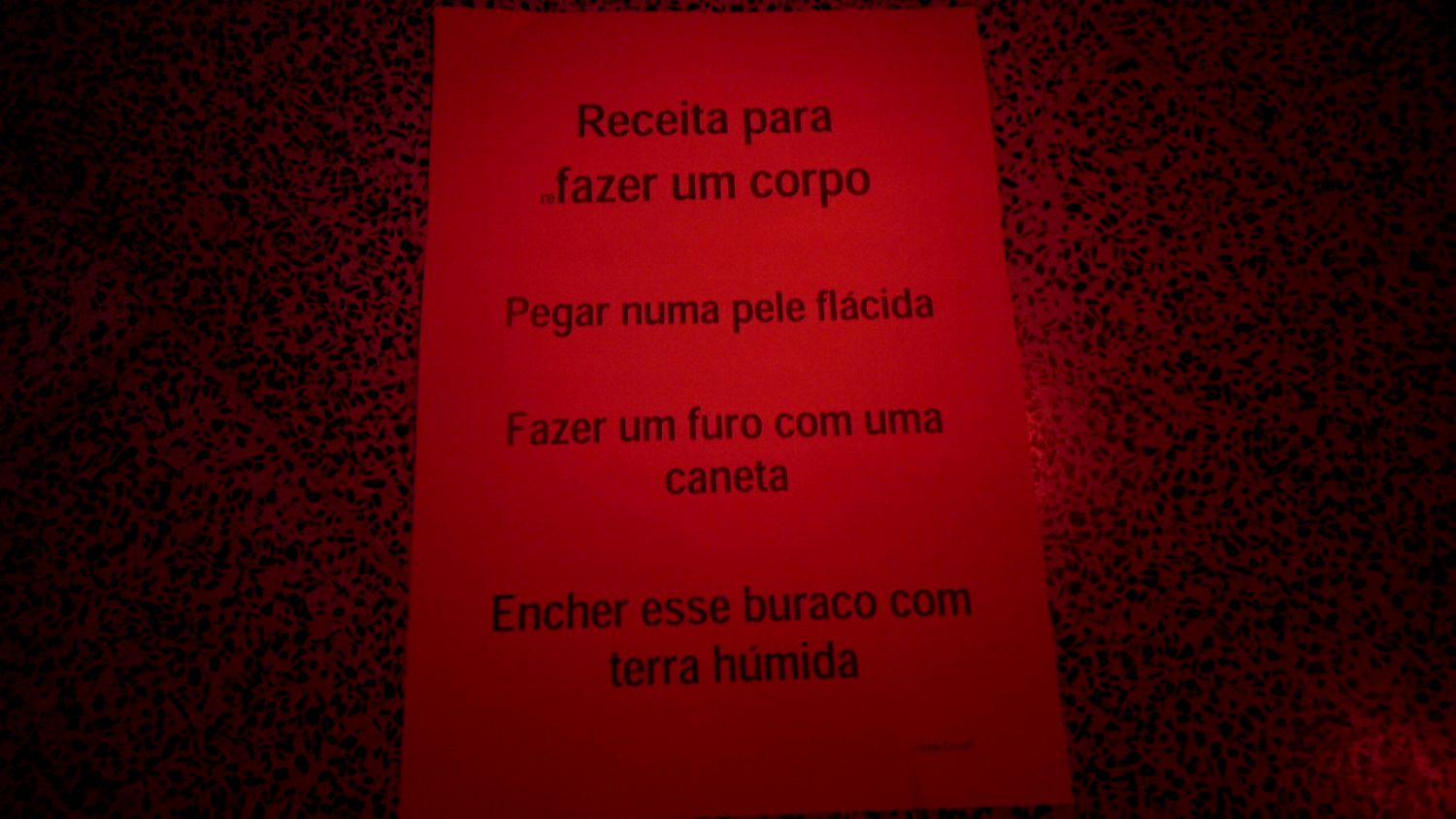
The Body without Organs, insofar as one may imagine and extrapolate - reductio ad absurdum - on the 'pataphysical' plane (according to Alfred Jarry's definition), each heteronym may be a body without organs or perhaps, who knows, an organ in itself. This organ, of the machine-atelier organism, has the capacity of absorbing or even removing from itself small pieces, like new organs.
The studio, more than a system, which alters between the fictional and the real, is a metaphor for the reverse of the skin, for the content that is hidden and written inside the self as a symptom of the context that surrounds me. So it is a living organism that, from its mechanical and metaphysical multricity, allows the real and the fictional to merge in a 'pataphysical' place, in a kind of collective organ: a heart that is intestine, stomach, lung, liver, kidney, and that tapers into a still healthy gall bladder.
What is the 3 O[s] equation?
The alchemical formula that enables my [our] existence.
–
This work is funded by National Funds through FCT - Foundation for Science and Technology under the project SFRH/BD/146774/2019.
[1] ARTAUD, Antoni - Theatre of Cruelty.
[2] Multiple creative identities.
[3] DELEUZE, Gilles; GUATTARI, Félix - O Anti-Édipo, capitalismo e esquizofrenia, vol.1, Lisbon: Assírio & Alvim, 1972, p. 7.
[4] ECO, Umberto - Obra Aberta, Lisbon: Relógio D'Àgua, 2016.
[5] PESSOA, Fernando - Fernando Pessoa archive.
[6] DELEUZE.
[7] DERRIDA.
Footnotes
- ^ ARTAUD, Antoni - Theatre of Cruelty.
- ^ Multiple creative identities.
- ^ DELEUZE, Gilles; GUATTARI, Félix - O Anti-Édipo, capitalismo e esquizofrenia, vol.1, Lisbon: Assírio & Alvim, 1972, p. 7.
- ^ ECO, Umberto - Obra Aberta, Lisbon: Relógio D'Àgua, 2016.
- ^ PESSOA, Fernando - Fernando Pessoa archive.
- ^ DELEUZE.
- ^ DERRIDA.



